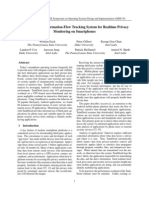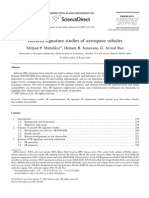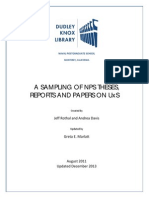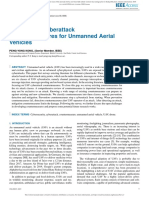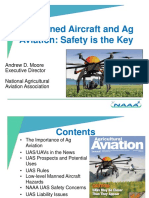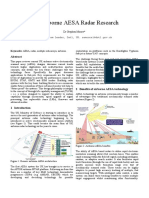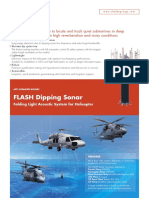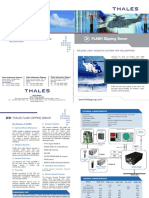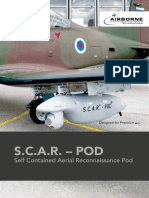0% found this document useful (0 votes)
79 views4 pagesRH-02-MAY 2018 p25-28 Sensor Suites
The document discusses trends in sensor technology adoption on commercial rotorcraft. More sophisticated radar and sensor systems from the military sphere are becoming available for commercial use to enhance visibility, safety, and surveillance capabilities. Specifically, active electronically scanned array (AESA) radar, commonly used in fighter jets, is starting to be adopted for parapublic applications due to its ability to perform multiple tasks simultaneously compared to traditional radar. Imaging payloads are also discussed as important for search and rescue missions as well as law enforcement. Major manufacturers are developing solutions to integrate advanced sensors for use on various rotorcraft types.
Uploaded by
Mutiara Kaidah NasutionCopyright
© © All Rights Reserved
We take content rights seriously. If you suspect this is your content, claim it here.
Available Formats
Download as PDF, TXT or read online on Scribd
0% found this document useful (0 votes)
79 views4 pagesRH-02-MAY 2018 p25-28 Sensor Suites
The document discusses trends in sensor technology adoption on commercial rotorcraft. More sophisticated radar and sensor systems from the military sphere are becoming available for commercial use to enhance visibility, safety, and surveillance capabilities. Specifically, active electronically scanned array (AESA) radar, commonly used in fighter jets, is starting to be adopted for parapublic applications due to its ability to perform multiple tasks simultaneously compared to traditional radar. Imaging payloads are also discussed as important for search and rescue missions as well as law enforcement. Major manufacturers are developing solutions to integrate advanced sensors for use on various rotorcraft types.
Uploaded by
Mutiara Kaidah NasutionCopyright
© © All Rights Reserved
We take content rights seriously. If you suspect this is your content, claim it here.
Available Formats
Download as PDF, TXT or read online on Scribd
/ 4




